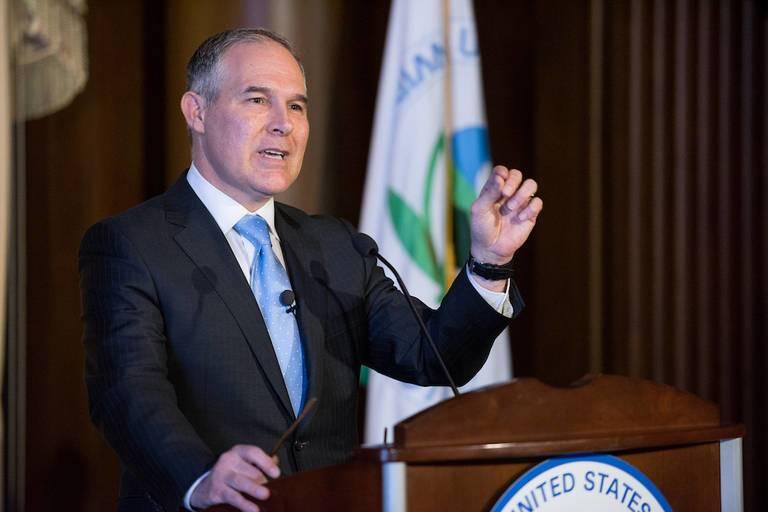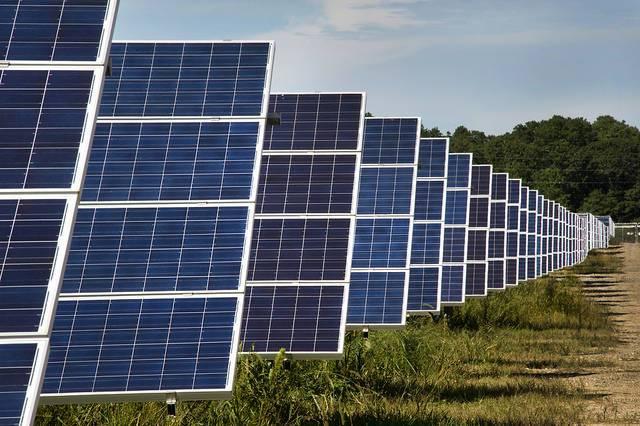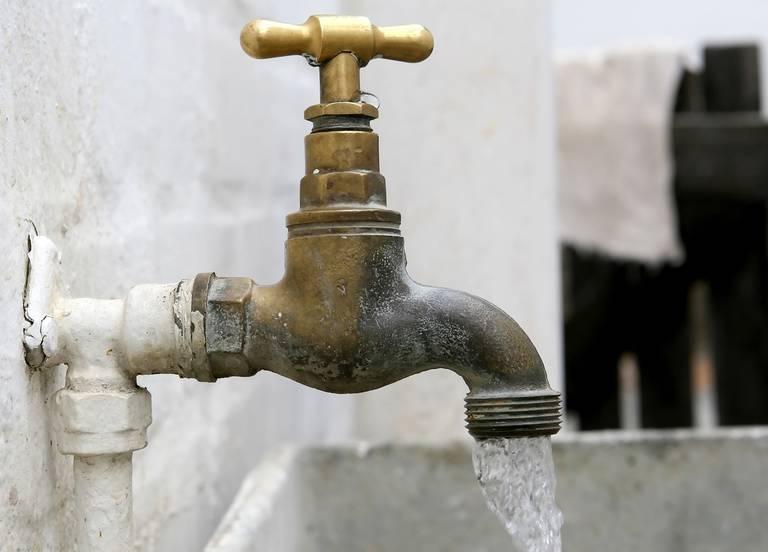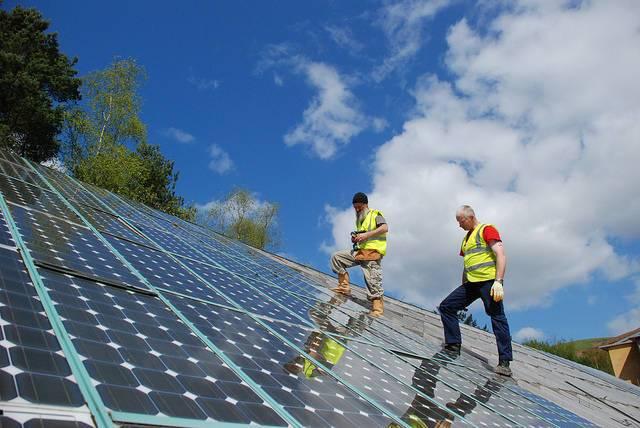Scott Pruitt Forgot Something in His First Address as EPA Head: The Environment


This week Scott Pruitt gave his first address as the new head of the U.S. Environmental Protection Agency. Strikingly absent from his speech: the environment. He barely mentioned it. Instead, he talked about being excited to be in a city with a Major League Baseball team, while thanking long-time employees of the agency.
Pruitt did take time to discuss regulations, saying they “ought to make things regular” and that “regulators exist to give certainty to those that they regulate.”
He went on to say the EPA should “try to avoid ... abuses that occur sometimes," while targeting guidance and regulation through “litigation [and] consent decrees that actually bypass the Administrator’s Procedures Act.”
Those remarks makes sense when taken into account with statements Pruitt made a few minutes later about the Congress being “very specific on what we can and cannot do as an agency." He said the EPA needs to “respect that” and “avoid litigation.” The current Congress is headed by Republicans and is unlikely to support any of the EPA’s rules made under former President Barack Obama.
Pruitt’s first address as the EPA’s head echoes his Senate confirmation hearing. In his opening remarks to the Senate, Pruitt made it clear that as head of the EPA he would ensure that the agency “has a cooperative and collaborative relationship with Congress in fulfilling its intent.” In other words, say critics: The EPA under his leadership will be little more than a rubber-stamp agency for the Congress and will not take the initiative to actually protect the nation’s air, water and land.
In Pruitt's lone mention of the environment, he said the EPA “can be both pro-energy and jobs and pro-environment” and doesn’t have to “choose between the two.” That's true, say many analysts, including this 3p contributor. But what he failed to realize is that being pro-fossil fuel energy and being pro-environment are mutually exclusive. The burning of fossil fuels is largely responsible for climate change. And places like California, which recently went from one of the worst droughts in American history to deluge, are already experiencing the impacts of it.
Pruitt's cozy relationship with fossil fuel companies
Pruitt sued the very agency he is now running 14 times as the state attorney general for Oklahoma.In one such lawsuit, Pruitt and several other states sued the EPA over the Clean Power Plan, an Obama-era policy that is meant to reduce the electricity sector’s pollution.
That really should not come as a surprise considering the treasure trove of emails -- 7,500 pages in total -- which were made public after the Senate confirmed Pruitt to head the EPA.
Most of the emails were sent by Pruitt’s staff in 2013 and 2014, Politico reported this week. Some reveal that a 2013 letter Pruitt sent to the EPA was written almost entirely by Bill Whitsitt, former executive vice president for public affairs for Devon Energy.
Several emails sent back and forth by Pruitt and Devon Energy staff were released this week. The recipients included Whitsitt, who sent a draft of Pruitt's aforementioned letter that was sent to then-EPA head Lisa Jackson.
The draft letter stated that the EPA “may be very significantly overestimating methane emissions from natural gas production.” It came as a response to a petition from Northeastern states who wanted stricter methane regulations. Whitsitt wrote that the letter “would be a shot across the bow, warning EPA not to go down a negotiated-rulemaking or wink-at-sue-and-settle tee-up process.”
The Center for Media and Democracy (CMD) filed an Open Records Act request and then a lawsuit to have the emails made public, although they didn't see the light of day until after Pruitt was confirmed.
Other emails discovered as a result of the CMD’s request and lawsuit include communications between the oil and gas lobby group American Fuel and Petrochemical Manufacturers. In 2013 the AFPM “coordinated opposition" to the Renewable Fuel Standard Program and ozone limits with Pruitt’s office, the Center said.
The Center went on to allege that the trade group gave Pruitt a template for an Oklahoma petition against the RFS, stating that “this argument is more credible coming from a State.” Pruitt filed opposition to the RFS and ozone limits later that week.
Many EPA staff were not thrilled with Pruitt's address. A current EPA staffer who has worked at the agency for over 20 years told Mother Jones that Pruitt did not mention “one word about public health.” The person added that Pruitt was “condescending and hypocritical.”
And it is also likely that the staff is not thrilled with Pruitt’s cozy relationship to the oil and gas industry. The American people should also not be thrilled for many analysts indicate that under his leadership the EPA will not protect their health from environmental pollution but will sit idly by while fossil fuel companies pollute the air and water.
Image credit: EPA
New York Reaps 800 Percent Solar Growth in Five Years


When we think of solar, sun-kissed states such as California, Hawaii and sometimes Florida come to mind. Even Georgia is seeing growth in solar, symbolized by its former governor and former U.S. President Jimmy Carter who recently leased part of his peanut farm to a solar power company. But Northeastern states, including New Jersey and Massachusetts, also have ambitious solar programs.
And the solar industry is booming spectacularly in New York, Gov. Andrew Cuomo said this week.
In a press statement issued on Tuesday, Gov. Cuomo claimed New York’s support for solar power initiatives resulted in an 800 percent increase in industry growth from 2011, the year he took office, to 2016.
The state’s various renewable energy programs resulted in investments totaling $1.5 billion – with several regions experiencing a 10-fold increase due to the NY-Sun Initiative, Cuomo said. That program offers companies and local governments financial incentives, training and resources to help them adopt solar power.
Cuomo's announcement comes as some media reports suggest his emphasis on solar power development amounted to a financial drain on the state while offering few results.
Two years ago, New York had America's fourth-largest solar industry in terms of total jobs, according to a 2015 statement from the Solar Foundation. But this month the right-wing firebrand New York Post reported numbers from the Solar Foundation amounting to a 1 percent decrease in New York solar jobs last year. The decline in jobs pushed New York’s solar industry down to sixth amongst U.S. states, the Buffalo News reported earlier this month – despite solar accounting for 1 in 50 newly-created American jobs last year.
As outlined in the Solar Foundation’s annual solar jobs census report, growth in jobs at utility-scale solar installations in New York state were exceeded by a decrease in employment within the residential solar sector. But New York state officials expect solar energy jobs to rebound with an 11 percent increase during 2017, reported David Robinson of the Buffalo News.
Delays at the former SolarCity solar panel plant in Buffalo, now dubbed as Tesla Motor’s 'Gigafactory 2,' added another hiccup to New York’s solar industry. That plant is expected to launch operations this summer.
When tallying the numbers compiled by the governor’s office, the Mohawk Valley, which is wedged between Adirondack and Catskill Mountains, witnessed the largest growth in New York. It saw an almost 16-fold increase in solar capacity to just under 27 megawatts of solar capacity.
Long Island, however, has the lion’s share of all the state’s solar installations, with over 24,000 solar projects installed from New York City’s eastern boroughs to its easternmost tip at Montauk.
In total, the state now has a total capacity of 744 MW of solar power, enough to electrify approximately 121,000 average-sized homes, according to the governor's office.
Image credit: Brookhaven National Laboratory/Flickr
Thinking 'Glocally' About Water Scarcity: Why We Need to Act Now


https://www.youtube.com/watch?v=o_LQ4bdxOhw
By Karishma Bhagani
What if walking three hours to get water was a first-world problem?
It's easy to forget how accessible some basic resources are to us. For example, in many Western countries, including the United States, we have the privilege of turning on the faucet for access to clean drinking water. Thus, most of our time can be allocated to our jobs, school or raising families, instead of constantly trying to procure resources to sustain ourselves.
For many global citizens, a basic human right is drying up. Without significant changes, the United States Agency for International Development (USAID) reports that two-thirds of the world's population is expected to be living under "severe water stress conditions" by 2025. The situation in certain areas is even more dire. In 20 African countries, more than 30 percent of the population does not have access to clean water today.
My home country, Kenya, is experiencing a water crisis. The citizens in rural Kenya aren't afforded the privilege of simply walking to the faucet if they're thirsty; instead, they hike.
As I mentioned in my talk at the New England Biolabs Passion in Science Awards (video above), it takes a Kenyan child an average of three hours a day to fetch one liter of water. Almost half of the Kenyan population does not have direct access to a clean drinking water source -- that's 18 million people, 70 percent of whom live in a rural setting.
Lack of access to clean drinking water has multiple implications. First and foremost, the health of the population is adversely affected by the spread of water-borne diseases such as tuberculosis, cholera and diarrhea. This contributes to a negative feedback loop; children cannot attend school, leading to a depleted workforce and a detrimental impact on the economy of the country.
While I was in high school, half the country was drought-stricken, and the other half endured a rampant increase in water-borne diseases due to flooding. So, I created a cost-effective water purifier made from traditional elements, such as sand, gravel, charcoal, cotton cloth, and Moringa oleifera (shown below).
On average, the unit can purify five liters of water in one hour and costs less than $20 to create. It has the capacity to purify water for approximately 18 months of daily use by an average family of five people.
The initiative is called Matone de Chiwit, which means "drops of life."
Technological advancements have accelerated the development of innovative tools to solve global problems, but it's worth considering a different approach: Simplicity is sometimes the best policy.
Collectively, solving global challenges on a large scale can be daunting. However, if broken down into manageable portions, one can find simple solutions to each individual problem and begin to make a difference on a smaller scale in their communities. Not only will this eventually lead to a global movement of local solutions and shared ideas, but we will also begin to find similarities and ways to connect with different people from all over the world.
We must consider the long-term implications of our actions, not only within the context of our immediate environment, but also for the larger global community. True leadership means embracing our global community and taking action to make life better for others. As a global citizen, I believe that I have a responsibility to help populations in developing countries gain access to clean water.
How are you going to help the world as a global citizen?
Images courtesy of the author
Featured image: Pexels
Follow Matone de Chiwit on Twitter
While in high school, Karishma Bhagani founded Matone de Chiwit to provide water purifiers to places in need of clean water. The water purifier received first prize overall in the Golden Climate International Science Fair Competition in 2014 and was the recipient of a grant from the Reynolds Changemaker Challenge at New York University in 2015 and 2016. Karishma was also the recipient of the 2016 Passion in Science: Humanitarian Duty Award at New England Biolabs.
Capgemini UK launches ambitious carbon reduction targets


Watch Out, Uber and Lyft: Google’s Waze Takes On Ride-Sharing


Google’s traffic navigation app Waze plans to expand in order to take on ride-sharing giants Uber and Lyft, the Wall Street Journal reported this week.
Google purchased Waze for $1.13 billion in 2013 -- making waves in Israel, as Waze was that country’s first consumer app to hit the billion-dollar mark. After trials in Israel and San Francisco, Google is reportedly ready to roll out the new ride-sharing app in select cities across the U.S. and Latin America.
Waze will work differently from Uber, Lyft and other ride-sharing apps. Its largest rivals in the U.S. once started out as “ride-sharing” services, but rapidly morphed into the on-demand taxicab services as users appreciated the cheaper prices and real-time monitoring. Gett, another Israeli-founded transportation app, works in most cities as a digital dispatcher for local taxi companies.
But Waze will work as an online carpool tool for drivers who want to make some spare change on their commute. If someone wants to add some commuters to a ride, Waze will alert the driver to potential passengers along that route.
The Journal noted that the prices are expected to be about a third of the fares charged by Uber and Lyft. And the pricing is designed to discourage drivers from relying on Waze as their main or sole income: For now, drivers will be compensated 54 cents a mile -- which is the current Internal Revenue Service mileage reimbursement rate.
Waze has already built a steady fan following for its development of traffic maps using crowd-sourced data. As outlined in Fortune, for example, the app helps Los Angeles commuters avoid intersections with congested left turns, one bane of driving within America’s second-largest city. And the service built its carpooling chops by working with large companies to match riders with workers who follow a similar path to work.
The question Waze faces is whether it can compete and lure customers away from companies and services that are already established.
While Waze promises a far cheaper commute than Uber or Lyft, those companies’ car pool services in the Bay Area charge anywhere from $10 to $13 to drive from downtown Oakland to San Francisco’s Financial District – not a bad price when considering the Bay Bridge toll sets solo drivers back $6. And despite the fact that “Casual Carpool” drivers no longer win a toll-free drive across the Bay Bridge, this underground commuting scheme still has its diehard followers.
For those drivers who have the means to commute into the center of larger (and expensive) U.S. cities, scoring a 50 cents or so for each mile may not be enough of a financial incentive.
Nevertheless, Google’s bullishness on Waze is indicative of America’s creaky public transportation system. In the Bay Area, BART, now approaching a half-century in age, has long been beset by problems due to its aging infrastructure – which the rail system acknowledged last year after a barrage of Twitter rants from frustrated and infuriated commuters.
And while the current U.S. president has promised up to a trillion dollars in infrastructure improvements, the evidence suggests that public transportation is not high on the list of the administration’s priorities. With that said, Waze can probably find plenty of room for growth in the burgeoning alternative transportation market.
Image credit: Allan J. Cronin/Wiki Commons
This One-For-One Peanut Butter Fights Famine in South Sudan


The one-for-one business model has caught on in recent years, with Tom’s shoes being one of the more well-known social enterprises in the space. Other companies, including the eyewear company Warby Parker, have tinkered with one-for-one. But many have found other means to fund what they believe are worthy causes.
Now another social enterprise, Good Spread, is trying to do its part to address the human catastrophe in South Sudan. For every product the company sells, a portion of the profits are donated to organizations that distribute nutrient packs -- which are actually pretty similar to Good Spread peanut butter -- across South Sudan. Think of this purchase as a jar purchased here equals a packet of nutrition sent abroad.
South Sudan is the youngest country in the world, and also one of the planet’s poorest. The World Bank pegs per-capita income in South Sudan at less than $800 annually. Now the nation of 11.3 million people is suffering from one of the world’s worst humanitarian crises.
Estimates suggest that as many as 5 million people are in need of urgent assistance in South Sudan due to what the magazine Foreign Policy called “the famine we could have stopped.” Another 100,000 are in dire risk of starvation.
So, what is one potential salve for this tragedy? Good Spread aims to address the South Sudan crisis with a quintessential American treat, peanut butter. It also happens to be the base of RUTF (ready-to-use therapeutic-food), which is critical in treating people in regions afflicted by severe hunger and famine.
Humanitarian aid agencies have long touted this food as a way to meet the needs of people desperate for fat, protein, calories, vitamins and minerals. NGOs such as Doctors Without Borders have adopted fortified versions of peanut butter including Plumpy’nut: a cheap concoction mixed with powdered milk and other nutrients that can help kids mired in areas ravaged by famine gain weight and, at a minimum, stay alive.
Good Spread, whose founders were inspired by the Doctors Without Borders concoction, is promoting a similar product to treat children in South Sudan afflicted with malnutrition.
The product its founders are promoting is Mana, peanut butter mixed with powdered milk and vitamins that can be eaten out of foil packets. The social enterprise’s founders claim that 96 percent of children who are fed Mana end up on the path to recovery. According to the organization that manufactures Mana, children aged 6 months to 5 years are at the most risk from long-term health problems if they are not nourished.
So far, Good Spread’s products can be found at some retailers including Whole Foods, Kroger and Harris Teeter. Consumers can also purchase products -- including jars and packets of peanut butter, T-shirts, and gift cards -- directly from the company on its website.
Meanwhile, the European Union has announced an emergency humanitarian aid package for South Sudan valued at approximately US$87 million. This latest amount increases Europe’s assistance to South Sudan to more than $400 million since the country declared independence in 2011.
At a time when the U.S. wants to shy away from the 1.2 percent its federal government spends on foreign aid, South Sudan’s crisis shows that the world’s lone superpower cannot ignore the growing risks of conflict emerging worldwide. But the story of Good Spread tells us one thing: Those appalled by this catastrophe can find a way to help out however they can.
Image credit: Good Spread
North Dakota Tries to Slam the Brakes on Wind Power to ‘Save Coal’


This week, the North Dakota Senate is mulling a bill that would impose a two-year moratorium on wind power development. State Sen. Dwight Cook said the bill is necessary to “save coal,” as quoted in the Bismarck Tribune newspaper.
State senators amended Bill 2314 in order to allow North Dakota’s energy regulator, the Public Service Commission (PSC), to approve any new application for wind power projects if “additional generation is needed for consumers in the state.” But opponents, including state Sen. Erin Oban, still oppose the bill as they insist it creates a “moratorium without calling it a moratorium.”
Any calls to resuscitate coal in this northern prairie state of 740,000 ignores the fact that coal already powers the majority of its residents and businesses. According to the latest figures published by the U.S. Energy Information Agency (EIA), 75 percent of the state’s net electricity generation came from coal-fired power plants in 2014. The state is also rich in hydrocarbons.
The fossil fuel boom, due to drilling and hydraulic fracturing across the state’s Bakken formation, helped North Dakota rise to become the second largest oil-producing state in the U.S. The bubble drove a surge in construction -- and, to some observers, crime -- before low oil prices recently slowed growth.
Meanwhile, North Dakota’s PSC continued to allow wind power installations to launch across the state. One local university estimated that over 1,000 wind turbines generate about 1.8 gigawatts of clean energy across the state, with future projects eventually boosting that total to 2.7 GW over the next few years. That power, which supplies 17.5 percent of the state’s electricity, is enough to keep the lights on in 510,000 American homes.
The American Wind Energy Association claims that this sector also lends and economic lift to North Dakota, with 2016 capital investment of $4.2 billion. As much as $10 million of that figure went to locals for land lease payments, creating up to 5,000 direct and indirect jobs across the state.
North Dakota is now ranked 11th amongst U.S. states for both utility-scale wind power generation and installed capacity – and it's sixth in the nation in total potential wind power capacity.
The declining cost of wind energy offers opportunities for North Dakotans to save more money on their monthly utility bills, especially those whose home or office systems use electricity for heating instead of natural gas. North Dakota’s electricity costs per-kilowatt are low compared to most U.S. states, but its long winters contribute to the state having the third-highest energy consumption per-capita in the country.
Nevertheless, proponents of Senate Bill 2314 complain that wind power and other renewables have an unfair advantage over other sources of power because it is subsidized by the federal government. Critics in North Dakota reply that wind installations are a financial boon to rural communities, and historically federal subsidies have long favored the development of fossil fuel reserves.
In any event, any attempts to revive the U.S. coal industry ignore the fact that, despite an uptick in coal production projected for the next two years, the sector will still face a net decrease in total jobs. Furthermore, the head of the Utility Shareholders of North America told the Bismark Tribune that since utilities operate regionally, not solely within a state, any moratorium will hardly eliminate competition – instead, wind farms will simply be built in a neighboring state and North Dakota will lose out on the jobs.
Image credit: Crishna/Flickr
Scott Pruitt is Right: We Can Be 'Pro-Energy and Pro-Environment'


By Bob Keefe
In his first speech as EPA administrator, former Oklahoma Attorney General Scott Pruitt said the environment and the economy shouldn’t be at odds.
“I believe we as an agency and we as a nation can be both pro-energy and jobs and pro-environment,” Pruitt told EPA staffers and media in Washington on Tuesday. “We don’t need to choose between the two.”
Across America, clean-energy businesses and workers couldn’t agree more. Hopefully Administrator Pruitt and President Donald Trump will keep these firms in mind as they plot the new future of the EPA and America’s energy landscape.
More than 3 million Americans now work in clean energy, according to the U.S. Department of Energy and analysis by E2 (Environmental Entrepreneurs). Last year, solar jobs grew by 25 percent and wind energy jobs grew by 32 percent -- making them among the fastest-growing sectors of the economy, if not the fastest.
But also included in those 3 million are hard-working Americans who make and install more efficient heating, ventilation and air conditioning (HVAC) systems; who work in factories making Energy Star appliances and LED lighting; and who work on the next generation of batteries and more efficient electric grids. You can see a great new factsheet from E2 detailing America’s clean energy workforce here.
Administrator Pruitt is right that there’s no reason America can’t be pro-energy and pro-environment. There’s no better way to make that happen than supporting clean-energy policies.
Unfortunately, Pruitt and President Trump have so far have indicated they’re going to do the opposite.
President Trump’s America First Energy Plan includes absolutely no mention of the fastest-growing energy sector there is : clean energy.
Just as bad, as Pruitt spoke to EPA workers on Tuesday, the Trump administration was preparing to try to stop the EPA’s Clean Power Plan, our most important clean-energy policy and one of the best economic catalysts in recent U.S. history, perhaps as soon as this week, according to news reports. The Clean Power Plan calls on states to reduce carbon pollution by about 30 percent by adding more renewable energy, increasing energy efficiency and updating dirty power plants.
Ever since the EPA approved the Clean Power Plan in 2015, U.S. clean-energy businesses have been hiring workers, expanding and making plans to meet expected demand. With passage of the historic Paris climate agreement a year later (and the Clean Power Plan as the centerpiece of the United States’ commitment), clean-energy businesses ramped up even more. Along with favorable tax policies, that’s why solar and wind jobs grew so fast, with energy-efficiency jobs not far behind.
The Clean Power Plan and the Paris climate agreement provided a clear market signal to American companies that we were headed toward a clean-energy future. The policies did exactly what Pruitt says they were supposed to do: “Regulations exist to give certainty to those who we regulate,” he said in his EPA speech.
By stopping the Clean Power Plan, the Trump administration will take that certainty away and pull the rug from beneath America’s clean-energy businesses, investors and workers.
The Trump administration’s anti-clean-energy policies so far do something else: They put America at a competitive disadvantage to the rest of the world, which is moving forward full speed ahead on clean energy.
China, for instance, more than doubled its solar energy production and is now the world’s biggest producer of solar energy. On some days, Germany produces nearly 100 percent of its power from clean, renewable energy. Even some of the world’s smallest countries — think: Uruguay, Costa Rica and Scotland — now get all or nearly all of their power from the sun, wind and other renewable sources.
Not surprisingly, other countries are all but salivating at the chance to lure away U.S. clean energy companies and their technology in the next four years. At a recent conference, Canadian clean-tech investor and entrepreneur Tom Rand had this to say about President Trump’s anti-clean energy plans: “If America wants to walk away from clean-tech, we’ll take it!”
President Trump and Administrator Pruitt have the opportunity to keep America on track and create jobs, drive economic growth, and improve our country’s economy and our environment.
Through smart clean-energy policies, we can, as Pruitt says, be “pro-energy and -jobs and pro-environment.”
For the sake of those 3 million Americans working in clean energy jobs, as well as our energy future and our environment, let’s hope the Trump administration lives up to Pruitt’s promises, and reverses its course on its anti-clean-energy policies — before they cause more uncertainty and damage.
Image credit: Flickr/Centre for Alternative Technologies
Bob Keefe is executive director of E2 (Environmental Entrepreneurs). See www.e2.org for details and follow Bob on Twitter @bkeefee2
New California Bill Targets 100 Percent Renewable Energy By 2045


This week California Senate leader Kevin De Leon introduced a bill that would require utilities to procure 100 percent of their electricity from renewable energy sources by 2045.
De Leon introduced Senate Bill 584 on the same day the U.S. Senate approved Oklahoma Attorney General Scott Pruitt as the head of the Environmental Protection Agency.
California’s current renewable portfolio standard (RPS) requires that utilities procure 33 percent of their electricity from renewables by 2020. De Leon’s bill would bump that up to 50 percent by 2025.
Such a lofty target would likely not be a problem for the state’s three biggest utilities, which served 27.6 percent of their retail electricity sales with renewable power in 2015. Each of the three utilities is under contract to procure over 40 percent electricity from renewables within four years.
Only one state in America has an RPS that is as ambitious as the one De Leon proposed: Hawaii passed a bill in 2015 that also requires utilities in the state to obtain 100 percent of their electricity from renewables by 2045.
De Leon leads California's opposition to Donald Trump
De Leon is doing more than introducing state senate bills. He is standing up to the Donald Trump administration.
De Leon issued a statement on Pruitt’s confirmation that made it clear he would help lead California’s opposition to the incoming administration. “California will not follow Trump’s destructive path,” he proclaimed. “We’ve proven that you can protect the environment and grow jobs.”
He added that the Golden State has “delinked economic growth from greenhouse gas emissions and helped turn clean energy into a pillar of our economy that now supports over half a million jobs in our state.”
De Leon also alluded to Trump’s immigration policies in his statement on Pruitt’s confirmation. “Our commitment to balancing quality of life and economic growth is a primary reason why California remains a magnet for immigrants from all over the world and will continue to be America’s capital of technological innovation,” he said.
“This is not Republican versus Democrat; it is much more than that,” De Leon told the press. “Our institutions and values are under attack. Our freedoms of press, speech and religion, and more, are being singled out by Mr. Trump.” He added that the responses state leaders like him give Trump are different because “we have a president making dire threats and using volatile language.”
On Jan. 25, De Leon appeared on MSNBC's "The Last Word with Lawrence O’Donnell," speaking about the Trump’s administration’s threats to defund California for its opposition to his immigration policies. Trump “cannot commandeer and enforce local municipalities, local police agencies, local governments and the state of California to do his work," he said. He pointed out that trying to blackmail California is not wise as it is the fifth largest economy in the world and 13 percent of the nation’s GDP. He proclaimed that California would “see him in a court of law.”
De Leon is not the only political leader in California to stand up to Trump. Four days after Trump’s inauguration, Gov. Jerry Brown made it clear in his State of the State speech that the state would stand up to Trump on issues that are important to Californians, including climate change, healthcare and helping immigrants in the country illegally. “California is not turning back,” Brown said. “Not now, not ever.”
With California in the hands of political leaders like De Leon and Brown, it is clear that the most populous state will continue to lead when it comes to the environment, even if it means opposing Trump’s policies. And maybe, just maybe, the old political adage will come true that as California goes, so goes the nation.
Image credit: Flickr/Tony Webster
From An Unbalanced Economy to a Human Economy


By Katherine Trebeck
Eight men control as much wealth as the poorest half of the world’s population, while 1 in 9 people go to bed hungry and others see their living standards stagnate. As the richest 10 percent of people create almost 50 percent of the world's carbon emissions, we are facing the sixth mass extinction and dangerous climate change.
These statistics illustrate the profound unfairness generated by economic systems geared up to increase GDP and by those businesses that are geared up to maximize short-term returns to shareholders.
In the past, growth delivered benefits when it was used well – and for the very poorest, ‘more’ is certainly necessary. But there are increasing signs that many GDP-rich countries are entering a time when the benefits from economic growth are tailing off. The CEO of Ikea has even spoken of ‘peak curtain’ – a satiation in the West of, in this case, home furnishings. Less flippantly, we see that there are diminishing returns in terms of social progress from increases in per capita GDP.
Worse than that, pursuit of growth risks doing great harm. A considerable proportion of current spending, whether as individuals or collectively via the state, is ultimately driven by a failure to enable people to flourish. When the nature of the economic model doesn’t deliver security or meaning, or when it causes anxiety and precariousness, demand for certain services rises.
One only needs to think of the many treatments people seek for stress or the support (for example at hospitals) for those who have sought consolation via drugs and alcohol. Think also of welfare payments (if they are lucky) for those cast aside by businesses intent on downsizing their labour force in pursuit of profits or flood defenses and insurance payouts (if they are lucky) for those impacted by an economy that doesn’t respect planetary boundaries.
Growth built on such foundations is 'uneconomic.' As JK Galbraith once warned, "One cannot defend production as satisfying wants if that production creates the wants."
A more human economy
Getting to grips with an alternative to this reality is urgent: The incessant pursuit of more in the GDP-rich world is endangering the ability of people around the world to increase their living standards; to move out of poverty, and destroying our collective resource base. Many in the poorest countries will continue to be shut out if those that industrialized first leave nothing for them.
Wouldn’t it be a tragedy if, in the rush for more – more GDP, more profits, more stuff – people and governments didn’t recognize that the GDP-rich world has sufficient material and monetary resources?
The challenge of today is not one of global scarcity, but an inability to appreciate and share the resources that exist within and between countries. The very purpose of the economy must shift; it is time to make ourselves at home in a world that has enough.
Making ourselves at home means getting things right for people in the first place, rather than having to constantly repair the damage created by an economy set on growth at all costs (a highly inefficient and politically fraught approach to delivering good lives sustainably). This means applying measures and goals that align institutions and businesses with the needs of people and planet. Making ourselves at home is about initiating virtuous cycles and ensuring wealth is shared and sustains our resource base.
These virtuous cycles form the basis of a human economy, one that works for people and planet.
Image credit: Pexels
Katherine Trebeck is Senior Researcher for Oxfam GB where she is exploring steps towards a ‘new economic paradigm’. She will be one of the key speakers of the New Economy and Social Innovation Forum - Discounts available until 28th Feb! NESI Forum is a non-profit initiative will bring together the main actors of change and opinion leaders to think, talk and lay the foundations of a new economy, more sustainable, social, based on values and aimed at the common good, in Malaga (Spain), on 19th-22th April, 2016.